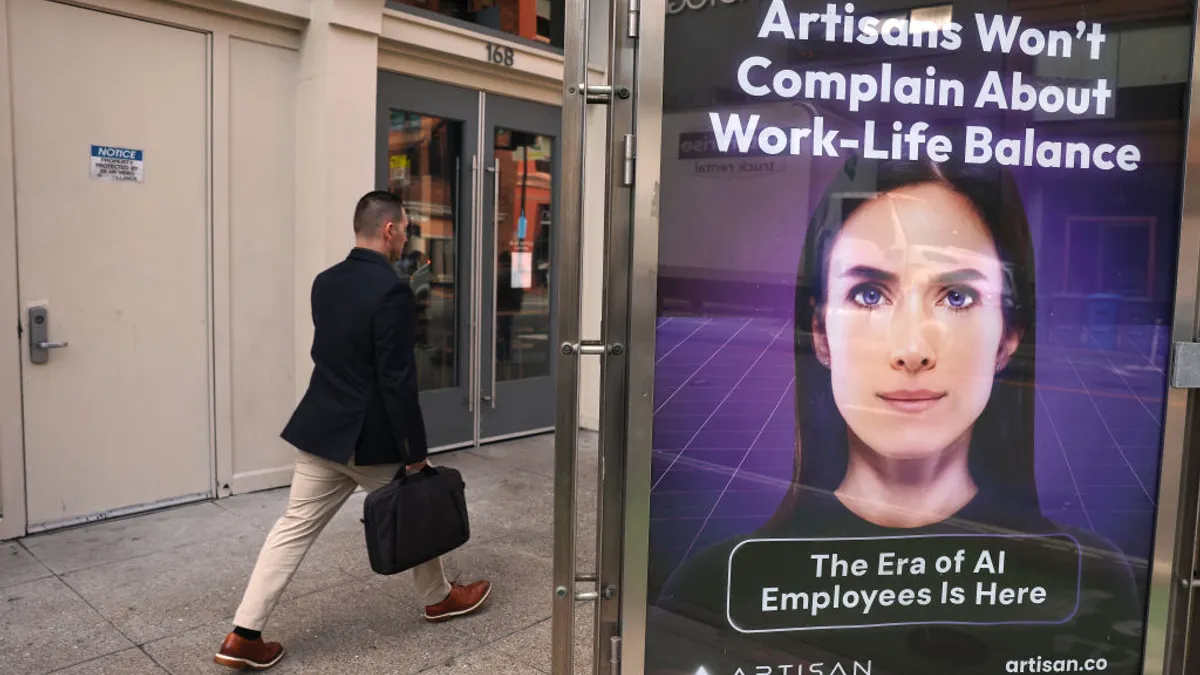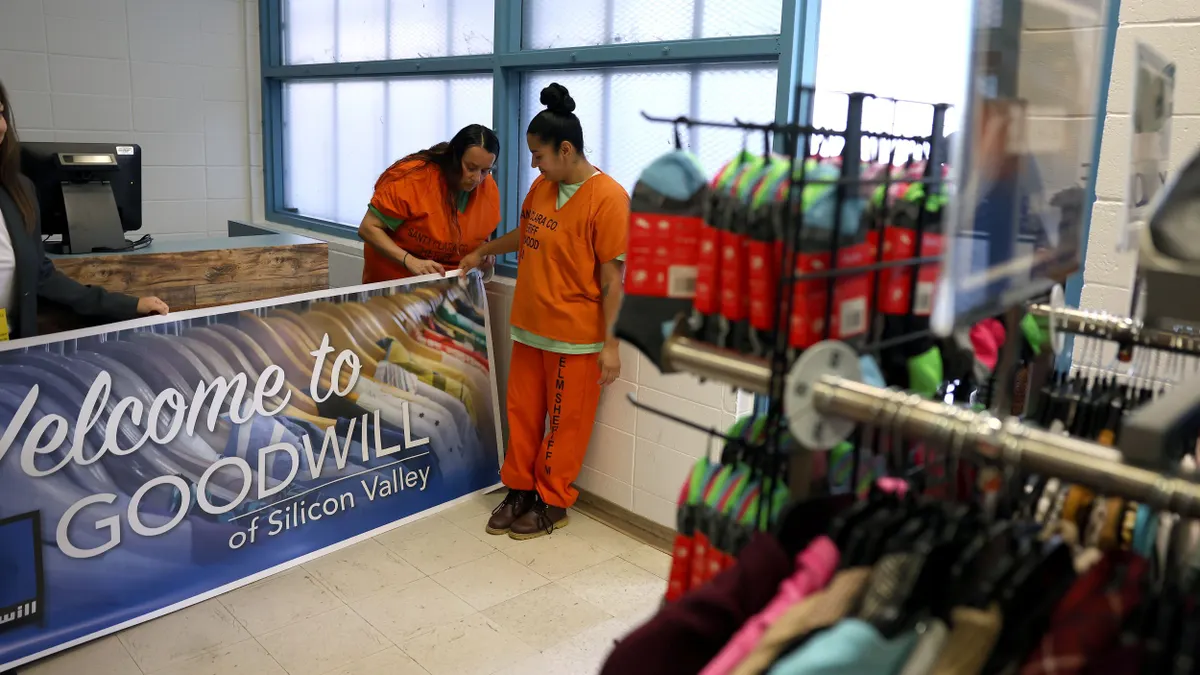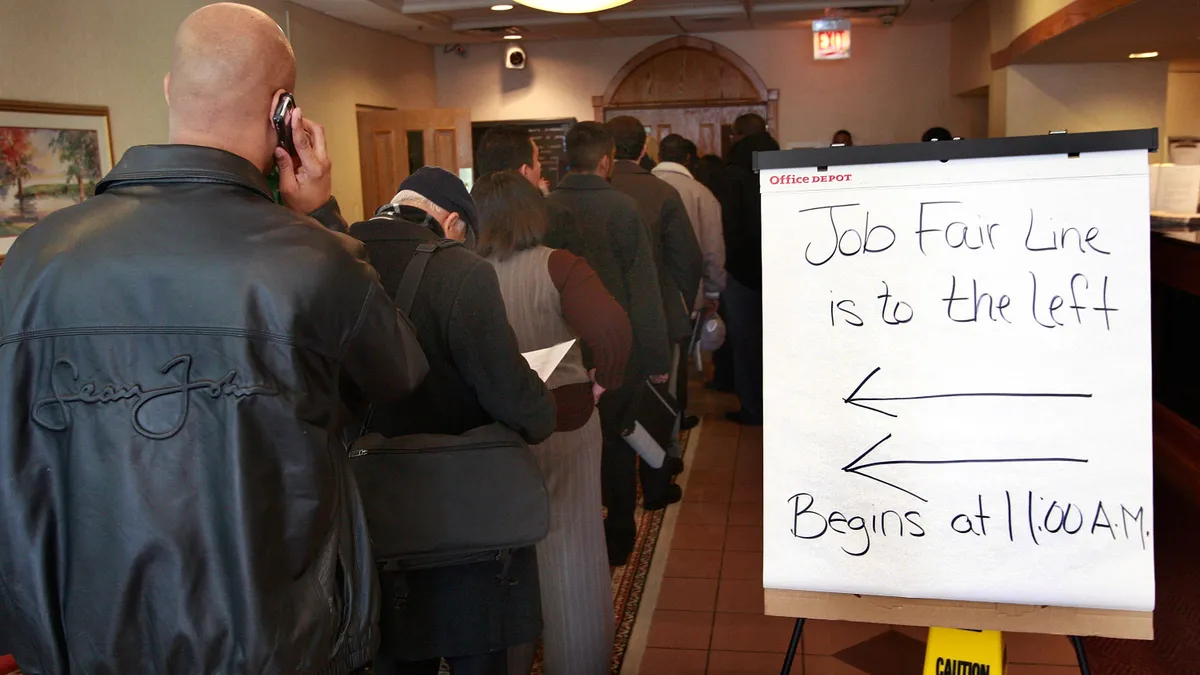No one understands customer experience like a front-line worker. Cashiers, bank tellers and call center agents are the ones shaping the brand experience day in and day out — and the ones receiving feedback right from the source.
Many CX, or customer experience, leaders don’t think they need to own anything about the employee experience, according to Steven Bailey, commercial excellence leader at EY Americas. However, employee experience ultimately “infuses itself into the product, into the service and into the brand experience,” he told CX Dive.
Leaders need to listen to and work with front-line employees if they want to perfect their strategies, according to Judy Weader, principal analyst at Forrester. It’s not enough to talk to a manager running the call center. The people working the phones have valuable insight, too.
“They’re emotionally invested in things being better for the customer because when things aren’t going well for the customer, they’re always the ones bearing the brunt of it,” Weader told CX Dive. “They want things to be different. They just need help.”
Collect a range of feedback
The baseline for gathering employee feedback is standard sampling tactics, Weader said. Find a representative sample of employees in a particular region, conduct interviews to hear their thoughts and look at how their testimony backs up other relevant data.
Companies should supplement polling with a formal, always-open feedback process, according to Bailey. The system should be very easy to use, and it should encourage reporting negative experiences as well as positive experiences to collect viewpoints beyond what surveys turn up.
“You’ve got to have a quiver full of arrows — of these different tools — that you’re using to collect feedback constantly,” Bailey said.
From there, CX leaders can work with technology teams to turn any raw information they collect into actionable insights, according to Weader. Employee stories are specific to their role and context, and it can take a bit of work to tease out the feedback that points to wider problems.
Get on the front lines
Leaders can gather a lot of insight from surveys and formal feedback. However, neither is a replacement for direct one-on-one conversations with associates and agents.
No executive should be expected to be out in the field every day, but every executive can benefit from spending a little time each month in their stores and call centers, according to Weader.
“Logistically speaking it can be difficult, but there’s no executive who should be immune from spending time on the front line,” she said.
For example, a CX leader could visit a call center where they see agents slogging through 10 screens over 5 minutes to assist a customer with an issue that should have easily been resolved in 30 seconds.
An executive who experiences that struggle in person will have a deeper understanding of the problem at hand than one who has only inferred through associated data points that their call center software may be inefficient, Weader said.
“If you show it to them on a screen, it’s not going to feel nearly as real as that visceral experience of being there in the moment,” Weader said. “There’s no substitute for that.”
Humanize employee interactions
Employee feedback needs to be part of a closed loop, according to Bailey. Executives should make it clear that the workers who take the time to share their experiences and thoughts with leadership are having a positive impact on their own jobs.
“If you expect your own employees to contribute to feedback on the customer experience, they have to see that that contribution is going to someone, and that it is being put into practice,” Bailey told CX Dive. “Ideally, that they’re even getting recognized for their contribution.”
Recognition includes celebrating employees’ wins, Bailey said. This strategy can be just as effective on the front line as it is in the boardroom and can humanize otherwise dry mandates by showing workers their efforts are truly appreciated.
Leaders also need to avoid handing down policy changes in the form of plain instructions, according to Bailey.
Instead, executives need to translate their instructions from boring procedures into explanations of why things are being done this way, Bailey said. Managers should have access to tools and training that help encourage good communication with their workers.
“To make it real, you’ve got to use the storytelling of, ‘Hey, this is the customer, this is what they’re experiencing, this is why we’re engaging them this way,” Bailey said. “By humanizing the interaction versus making it only a mandate, you’ll get more buy-in.”





















